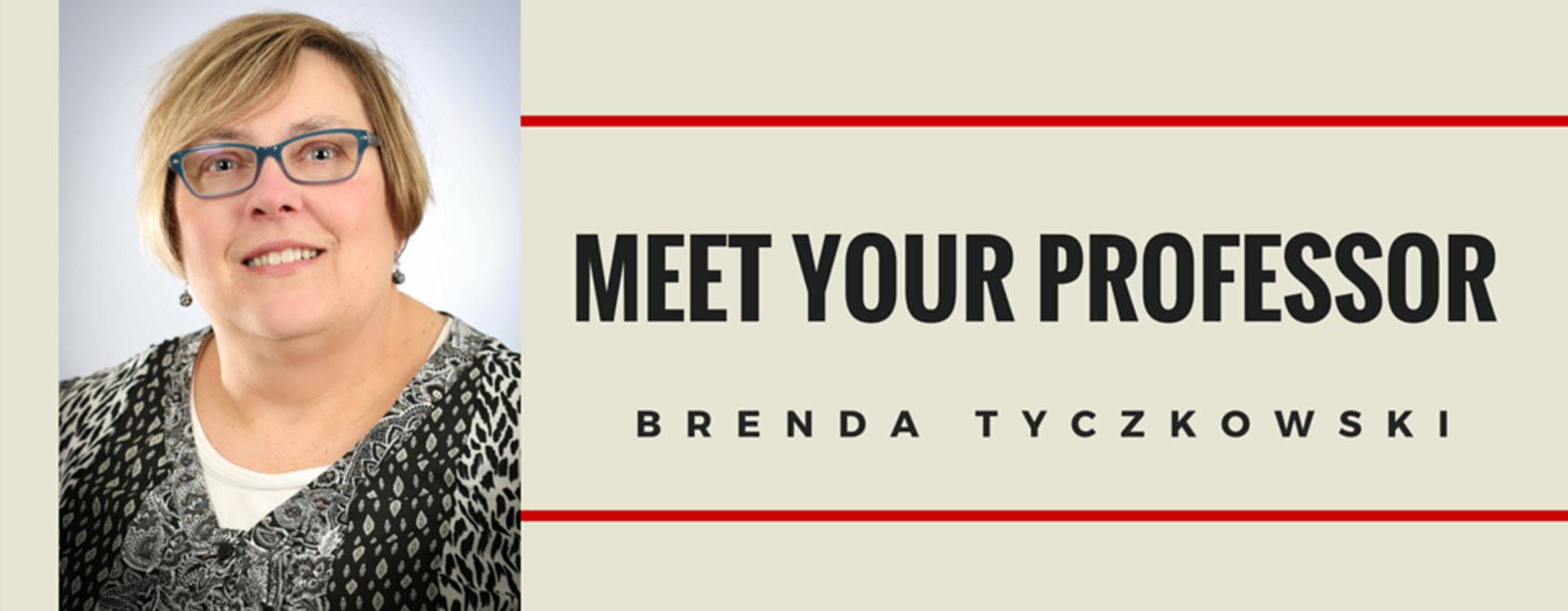When you talk to UW Bachelor of Science in Health Information Management and Technology (HIMT) students and graduates about the program, one name always comes up:
Brenda Tyczkowski.
Students are mad about her. They tell us about her engaging online courses (HIMT 310 and HIMT 430), fast responses, and exceptional guidance as a professor and adviser.
 According to her faculty bio, Brenda is an RN and Doctor of Nursing Practice (DNP) and has been an HIMT academic director since 2010.
According to her faculty bio, Brenda is an RN and Doctor of Nursing Practice (DNP) and has been an HIMT academic director since 2010.
But we wanted to know more about Brenda and her career path in nursing and health information management (HIM).
So, we gave her a call and asked her. Here’s the conversation that followed.
You’re an academic director for the HIMT program… What does that entail?
I advise students earning their HIMT degree from UW-Green Bay. That includes students accepted into the program and those who are interested but don’t meet the admission requirements yet. Those folks are working on their prerequisites, which they can complete online through UW-Green Bay.
Otherwise, the academic director position is about finding instructors for the courses and helping students understand big picture things, like which track (HIM or health IT) is right for them. When students get close to graduation, I help them think through what kind of career they want.
How often do you connect with the students you advise?
I do a thorough orientation when they start the program. It’s about an hour of walking them through resources, course selection, and registration, if they need it.
Then each semester, I help them narrow down what courses to take. I have an advising worksheet that I update and send to the students listing the courses they’ve taken, which ones they need, and what’s running the following semester that they might be interested in.
RELATED: An Inside Look at a UW HIMT Course: Quality Assessment and Improvement
What introduced you to the HIMT field?
At the nursing home I used to work at, an administrator asked me if I was interested in getting computerized medical records. And I said, sure.
At the time, electronic medical records (EMRs) were just nurses’ notes. But I immediately saw the value and how much we could do with EMRs. So I contacted the owner of the EMR company, American Data. I wanted a care plan feature, and he was happy to add it, but he didn’t know anything about care planning.
So I put together those plans for the EMR system; the owner implemented it and started marketing that additional piece to customers. And that’s how my work in EMR implementation all started. After that, he asked me to come work for American Data. I became the director of training and EMR implementation, worked with clients to install EMRs, and trained the staff on the software. I traveled around the country for seven years, working in health facilities from inner city Chicago to rural North Carolina.
After I left the company, I worked for the State of Wisconsin’s Bureau of Nursing Home Resident Care, first conducting annual surveys and later as a complaint investigator. My HIM knowledge was very helpful for these jobs, too, in terms of looking at how documentation can support the care being given.
Learn more about our 100% online degree and certificate programs.![]()
Get Program Guide
Why were you interested in HIM instead of the technical side, health IT?
My real interest was always in big picture EMR work and in making the system fit the environment and be effective—as opposed to understanding design needs.
Is it common for nurses to transition to HIM?
We have a fair number of nursing students who are looking to make that transition. Some because of interest, and others because their employer is looking for someone who has more in-depth knowledge of HIMT.
You earned your undergraduate degree from UW-Green Bay. How did you end up there as an instructor?
I could see job cuts coming to my state department, and I spotted an opening for a UW-Green Bay lecturer with a focus on leadership. It seemed like the perfect fit, since leadership has been the underlying theme of my career. So here I am. I started my doctorate right away, because you really need that to be a professor.
RELATED: From Nursing to HIMT: UW Academic and Program Director Discusses Career Journey and Shares Advice
Have you always enjoyed teaching?
I have. And my doctorate was an online program, so I can really relate to students who are taking courses online and holding down a full-time job.
What do you enjoy most about advising and teaching online adult students?
Their sense of curiosity. For the HIMT program, I teach one introductory course and one final course, and it’s fun to see the students’ growth between those courses and the skills they’ve picked up. For instance, in the beginning, their writing skills are usually rough. But by the end, their writing is much more polished and they present their ideas in a more professional manner.
Read Part II of my interview with Brenda here!
To explore the UW Bachelor of Science in Health Information Management and Technology, start here. If you’d like to speak with an enrollment adviser about the program and if it’s right for you, call 608-800-6762 or email learn@uwex.edu.
More From the HIM and Health IT Blog
How Many People Become Registered Health Information Administrators?
New Video Showcases UW HIMT Online Learning Experience
Why Get an HIMT Degree? “I Landed a Full-Time Healthcare IT Job Before I Graduated,” Says UW Student
10 Ways to Feel Better Prepared for the RHIA Certification Exam










